Blog - TECHNICAL TIPS & TRICKS - Solid State Relays - Protecting AC SSRs against voltage transient phenomena
celduc® relais has just launched a new range of Solid State Relays with built-in TVS protection and suitable for standard industrial loads.
We take this occasion to remind you how to protect AC SSRs against voltage transient phenomena.
There are different kinds of overvoltage suppression devices to protect Solid State Relays outputs from voltage extremes such as overvoltage transients. This article explains you the various types of protection devices available in celduc’s range of Solid State Relays (SSRs).
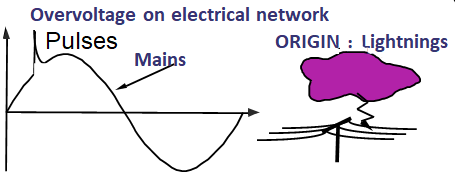
In fact, any voltage that exceeds the maximum permissible voltage, could potentially damage the SSR. If overvoltage conditions are likely to occur (e.g., lightning, voltage spikes from turning off inductive loads like motors and transformers, …), the outputs of the SSRs require an overvoltage suppression device. We will herewith explain you the various types of protection devices and provide suggested recommendations on their selection.
Protection by RC Network limits sudden variations of voltage : dv/dt and (dv/dt)c
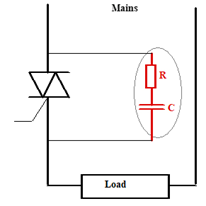
An RC snubber network is required to protect the SSR from the effects of dv/dt. By allowing sudden increases in voltage to travel through the RC network, the SSR will not see the full force of the transient and therefore does not misfire or activate at an appropriate time.
The celduc’s Solid State Relays have been improved in terms of resistance to these over-voltage factors enabling the RC network to be reduced substantially or practically eliminated. Most of the celduc’s Solid State Relays have such a high dv/dt capability that the snubber can be eliminated.
Finally, RC network increase the SSR leakage current and this could be sometimes a problem. For many applications a small leakage current is acceptable, however in a circuit that is sensitive to leakage current, the RC snubber network should not be included.
A TVS is an electronic component used to protect electronics from voltage spikes.
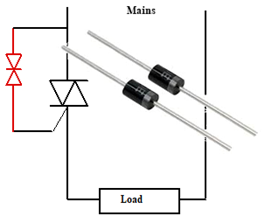
In most of the applications, there might be an overvoltage superimposed on the network voltage which can turn on the triac/thyristor or, even degrade it depending on the energy of the overvoltage.
The principle of the TVS protection on gates consists of turning on the Triac by the gate as soon as the voltage across its terminals exceeds the Transil Vdr voltage in order to avoid reaching the triac/thyristor avalanche breakdown level (defined by the Vdrm and Vrrm values : maximum repetitive peak forward and reverse blocking voltage). This is the maximum voltage that the device can block repetitively.
This self-trigger protection occurs in a few µs and maximum till the half cycle (10 ms @ 50 Hz).
celduc® integrates TVS at the gate terminal of the triacs/thyristors rated to ensure a low leakage current and avoid any untimely ignition in normal operation while guaranteeing that the triac/thyristor operates within the voltage limits and far from the recommended avalanche breakdown level of our components.
celduc® relais has just launched a new range of Solid State Relays with built-in TVS protection and suitable for standard industrial loads :
Our okpac® range of panel mount solid state relays :
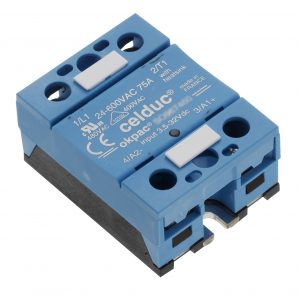
SO941440 – SSR 12A/12-280VAC/TVS/CTRL 3-32VDC/LED/INPUT CURRENT LIMITER
SO941940 – SSR 12A/12-280VAC/TVS/CTRL 18-280VAC/LED/INPUT CURRENT LIMITER
SO942440 – SSR 25A/12-280VAC/TVS/CTRL 3-32VDC/LED/INPUT CURRENT LIMITER
SO942940 – SSR 25A/12-280VAC/TVS/CTRL 18-280VAC/LED/INPUT CURRENT LIMITER
SO963440 – SSR 40A/24-600VAC/TVS/CTRL 3,5-32VDC/LED/INPUT CURRENT LIMITER
SO963940 – SSR 40A/24-600VAC/TVS/CTRL 18-280VAC/LED/INPUT CURRENT LIMITER
SO965440 – SSR 60A/24-600VAC/TVS/CTRL 3,5-32VDC/LED/INPUT CURRENT LIMITER
SO965940 – SSR 60A/24-600VAC/TVS/CTRL 18-280VAC/LED/INPUT CURRENT LIMITER
SO967440 – SSR 90A/24-600VAC/TVS/CTRL 3,5-32VDC/LED/INPUT CURRENT LIMITER
SO967940 – SSR 90A/24-600VAC/TVS/CTRL 18-280VAC/LED/INPUT CURRENT LIMITER
SO969440 – SSR 125A/24-600VAC/TVS/CTRL 3,5-32VDC/LED/INPUT CURRENT LIMITER
SO969940 – SSR 125A/24-600VAC/TVS/CTRL 18-280VAC/LED/INPUT CURRENT LIMITER
Our 22.5mm wide SSR “ready to use” with built-in heatsink :
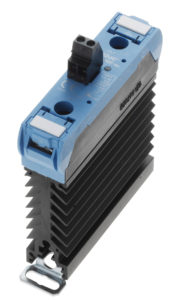
SUL942440 – SSR 23A/12-280VAC/TVS/CTRL 3-32VDC/LED/INPUT CURRENT LIMITER
SUL963440-HE – SSR 30A/24-600VAC/TVS/CTRL 3,5-32VDC/LED/INPUT CURRENT LIMITER
SUL963840-HE – SSR 30A/24-600VAC/TVS/CTRL 80-140VAC/LED
SUL963940-HE – SSR 30A/24-600VAC/TVS/CTRL 180-280VAC/LED
SUL965440-HE – SSR 32A/24-600VAC/TVS/CTRL 3,5-32VDC/LED/INPUT CURRENT LIMITER
SUL965840-HE – SSR 32A/24-600VAC/TVS/CTRL 80-140VAC/LED
SUL965940-HE – SSR 32A/24-600VAC/TVS/CTRL 180-280VAC/LED
SUL967440 – SSR 35A/24-600VAC/TVS/CTRL 3,5-32VDC/LED/INPUT CURRENT LIMITER
SUL967840 – SSR 35A/24-600VAC/TVS/CTRL 80-140VAC/LED
SUL967940 – SSR 35A/24-600VAC/TVS/CTRL 180-280VAC/LED
Reminder : EMC optimized Single phase Solid State Relays with TVS on gates outputs protection :
Reminder : Two-phase Solid State Relays with TVS on gates outputs protection :
Reminder : Three-phase Solid State Relays with TVS on gates outputs protection :
SGT9624300
SGT9654302
SGT9694300
SGT9834300
SGT9854300
SGT9854320
SGT9874300
To protect the SSR against high energy stray pulses, it is also possible to use a Metal Oxide Varistor (MOV).
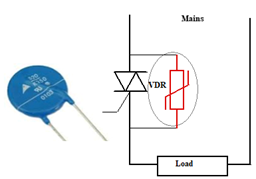
A MOV is used with an SSR to reduce the effects of voltage transients. A varistor will divert a surge current and protect the SSR from damage under many conditions. Varistors do not degrade over time however they do degrade when subjected to repeated transients. A varistor absorbs and dissipates the transient into its environment in the form of heat. If the transient is large enough that the varistor can not dissipate the heat, it will go into thermal runaway and damage to the MOV will occur. Over time if the MOV is subjected to frequent transients it will degrade. Proper line quality should be maintained and the MOV should be used as a backup for an unforeseen failure.
So the drawback with these is that they lose their characteristics over time as a result of the stray pulses received. They must be replaced after each incident.
Although the bi-directional TVS diodes provide very good performance for fast transients, the use of the MOV is a must in the case of a Solid state reversing contactor. Relays with internal TVS must not be used in motor reversing applications.
All the celduc Solid State Motor Reversers, such as SG9 / SMR ranges, already include the MOV.
-The celduc’s solid state relays suitable for resistive loads : SO9, SGT9, … series have a high immunity level as per EN61000-4-4 , so an RC is not necessary. It is strongly advised to use a voltage surge suppressor.
For Solid State Relays designed for resistive loads or standard industrial loads, celduc® relais offers some versions with TVS on gates protection which turn on the relay in case of overvoltage in order to protect it.
-celduc’s solid state relays designed for heavy duty loads : SO8, SGT8 series and the celduc random solid state relays : SO7, SGT7 series have a very high immunity level as per EN61000-4-4 and are fitted with an internal VDR.